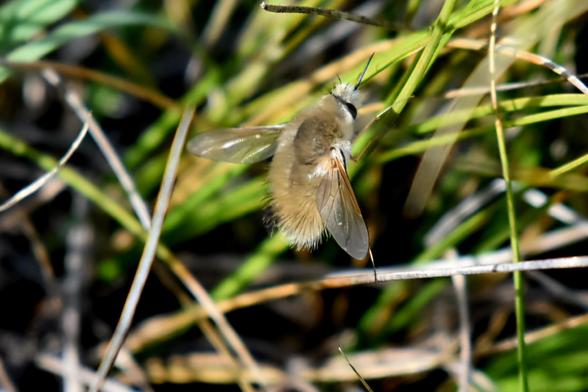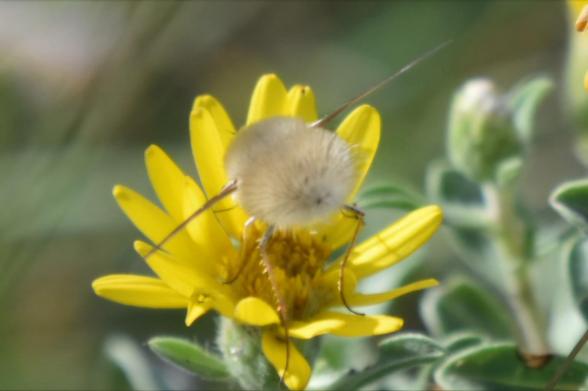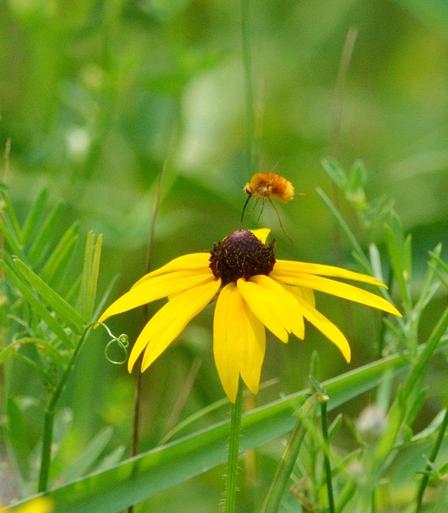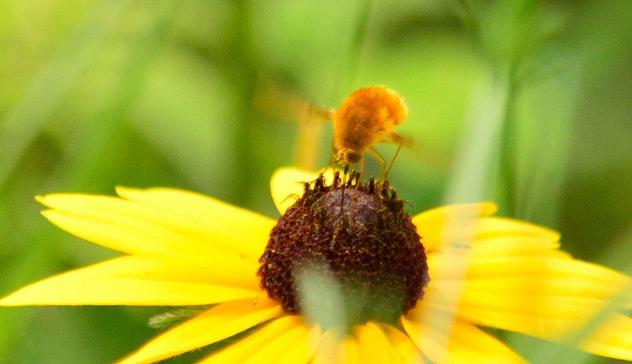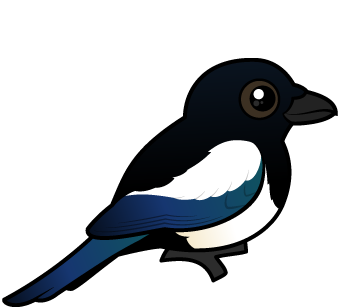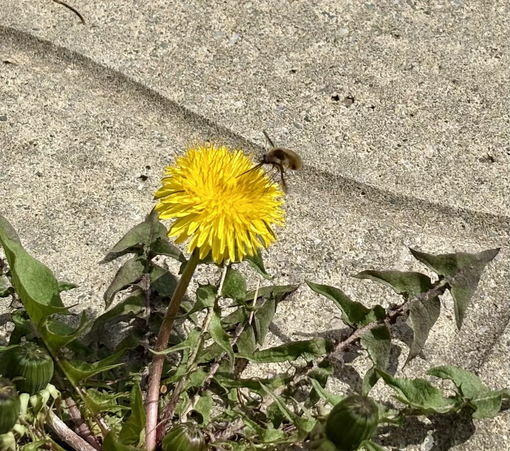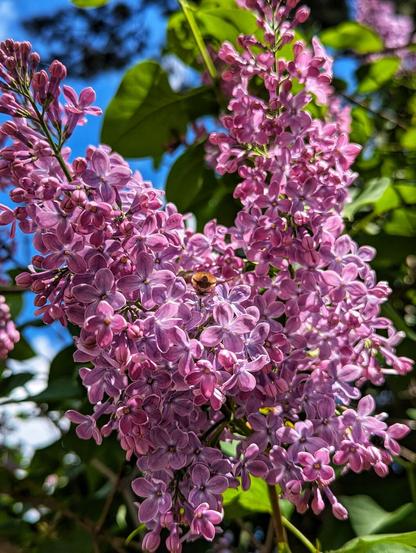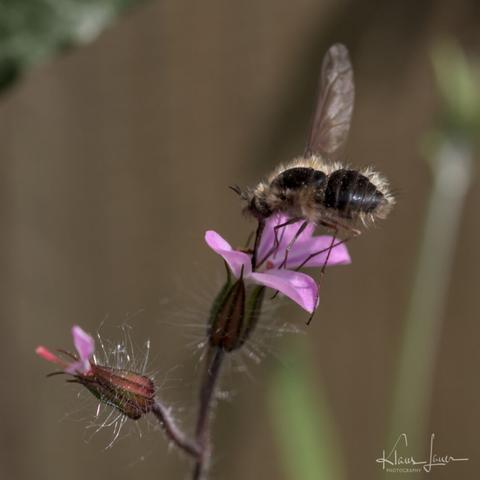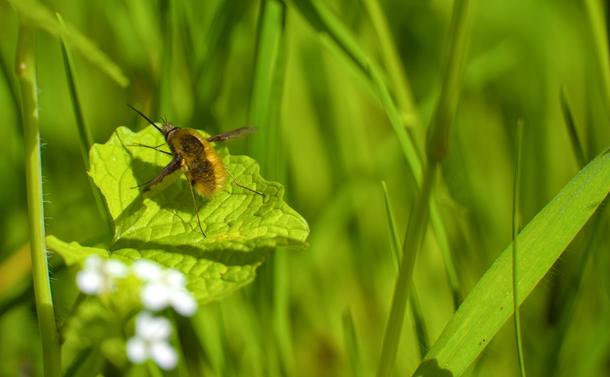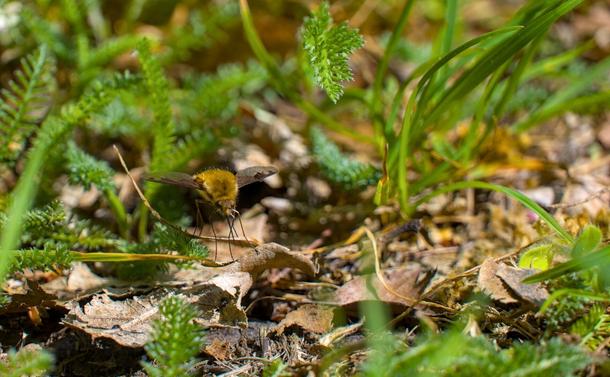Saw the cutest insect ever today! A species of bee fly called Anastoechus barbatus, no common name. It looks like a little flying cloud of fluff!
#nature #wildlife #wildlifephotography #naturephotography #ukwildlife #insect #beefly #orchid #wildflower
Really lucky with this new bee fly in the garden - Conophorus sackenii. It isn't a rare insect, but it is not commonly observed - only the 6th one on iNaturalist and the first one in the province! It is feeding on Canada anemone, a native flower.
#pollinators #yxe #beefly #beeflywatch #wildlifegardening #nativeflowers #canadaanemone #saskatchewan #insects
I appreciate this fly's dedication to the goth aesthetic.
(It is a type of Bee Fly that is apparently found all over the NA continent but I don't think I've ever seen or at least noticed this particular kind until now.)
#yeg #yegGardening #gardening #BeeFly #fly #insect #BloomScrolling
A Long Nose Bee Fly
Insects I see around the house.
#Flieder #Wollschweber #BombyliusMajor #Bombylius #Frühling #spring #lilacBush #bloomScrolling
#wollschweber #storchenschnabel #makro #natur #frühling
#beefly #herbrobert #closeup #nature #spring
AMANDA KONISHI on Instagram: "⚡️ 𝘽𝙤𝙢𝙗𝙮𝙡𝙞𝙪𝙨 𝙢𝙖𝙟𝙤𝙧 ⚡️ Frequent mimics and parasites of bees, Bombyliid flies use their look-alike skills to get close to a potential host bee’s nest. A female fly will hover over a nest entrance and launch her eggs from the air. They are extremely agile fliers and their novel flight behavior has been described as “yawing”, where they rotate around a vertical axis (Layer, 2013). While being very agile, they are successful through a multiplicity of oviposition attempts. As wittily described in ‘The Solitary Bees’ (Danforth, Minckley and Neff, 2019): ”These flies hover above the ground and launch eggs into any hole, crack or crevice that might have the slightest resemblance to a bee nest. They frequently oviposit toward totally inappropriate objects, such as rocks, stones, roots, and the eyelets of shoes.” They lay up to 1,000 eggs a day in the hopes that a few will find their way into an active nest. A successfully placed egg will hatch and the fly larva will crawl until it reaches an occupied brood cell, and wait for the bee larva to complete development before consuming it. The fly larvae will then pupate and remain underground throughout the winter. This illustration was produced as part of a larger graphic for @projectgnbee under the direction of Dr. Jordan Kueneman. . . . . #bombyliusmajor #greaterbeefly #beeflies #broodparasite #solitarybees"
154 likes, 9 comments - fruitnotanacorn on November 22, 2024: "⚡️ 𝘽𝙤𝙢𝙗𝙮𝙡𝙞𝙪𝙨 𝙢𝙖𝙟𝙤𝙧 ⚡️ Frequent mimics and parasites of bees, Bombyliid flies use their look-alike skills to get close to a potential host bee’s nest. A female fly will hover over a nest entrance and launch her eggs from the air. They are extremely agile fliers and their novel flight behavior has been described as “yawing”, where they rotate around a vertical axis (Layer, 2013). While being very agile, they are successful through a multiplicity of oviposition attempts. As wittily described in ‘The Solitary Bees’ (Danforth, Minckley and Neff, 2019): ”These flies hover above the ground and launch eggs into any hole, crack or crevice that might have the slightest resemblance to a bee nest. They frequently oviposit toward totally inappropriate objects, such as rocks, stones, roots, and the eyelets of shoes.” They lay up to 1,000 eggs a day in the hopes that a few will find their way into an active nest. A successfully placed egg will hatch and the fly larva will crawl until it reaches an occupied brood cell, and wait for the bee larva to complete development before consuming it. The fly larvae will then pupate and remain underground throughout the winter. This illustration was produced as part of a larger graphic for @projectgnbee under the direction of Dr. Jordan Kueneman. . . . . #bombyliusmajor #greaterbeefly #beeflies #broodparasite #solitarybees".
#naturfotografie #naturephotography #natur #nature #insekten #insects #wollschweber #beefly #unterwegs
